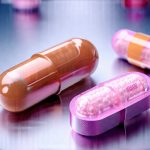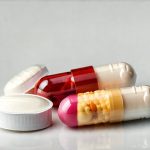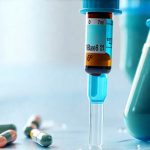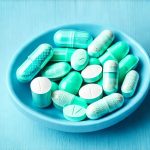Antibiotics are often life-saving medications, crucial for combating bacterial infections. However, their use isn’t without consequence; while targeting harmful bacteria, they also disrupt the delicate balance of microorganisms within our bodies, particularly in the gut and, importantly for this discussion, around the bladder and urinary tract. This disruption can lead to a variety of post-antibiotic effects, ranging from mild discomfort to more significant issues like recurrent infections or changes in bladder function. Understanding how antibiotics impact the bladder ecosystem and proactively planning for recovery is essential for restoring long-term urinary health and minimizing unwanted side effects. It’s not simply about finishing the course of medication – it’s about what follows that determines a smoother transition back to wellness.
The bladder, while seemingly separate from the gut, isn’t isolated from the broader microbial landscape. The gut microbiome profoundly influences immune function, and a compromised gut (a frequent outcome of antibiotic use) can weaken the body’s natural defenses, making one more susceptible to infections – including urinary tract infections (UTIs). Furthermore, there’s growing evidence of a direct link between the gut-bladder axis; alterations in gut bacteria can impact bladder health through inflammatory pathways and changes in neurotransmitter signaling. Therefore, a holistic recovery plan should address both gut health and specific strategies for supporting bladder function after antibiotic treatment. It’s about rebuilding resilience and restoring equilibrium to these interconnected systems.
Understanding the Antibiotic-Bladder Connection
Antibiotics are designed to kill bacteria, but they don’t discriminate between “good” and “bad” bacteria. This broad-spectrum effect is what makes them effective against infections, but also why they can cause collateral damage. In the urinary tract, a healthy microbiome helps prevent harmful bacteria from adhering to bladder walls and causing infection. Antibiotics can deplete this protective microbial community, leaving the bladder more vulnerable to colonization by pathogens. This isn’t always immediately apparent; it’s often a gradual weakening of natural defenses that sets the stage for future problems.
Beyond direct microbial disruption, antibiotics can also affect the bladder lining itself. Some studies suggest antibiotic use may contribute to changes in the glycosaminoglycan (GAG) layer – a protective coating on the bladder wall – making it easier for bacteria to adhere and proliferate. This is especially relevant for individuals prone to recurrent UTIs. Importantly, the type of antibiotic used, its duration, and individual factors like age and pre-existing health conditions all play a role in how significantly the bladder is affected.
The impact isn’t limited to acute infections either. Long-term or repeated antibiotic use can lead to antibiotic resistance, making future infections harder to treat. It also further disrupts the microbiome, creating a vicious cycle of infection and treatment that progressively damages urinary health. Therefore, preventative measures and a robust recovery plan are crucial for minimizing these risks.
Rebuilding Your Gut Microbiome
A healthy gut is paramount for overall well-being, and particularly important after antibiotic use. Since antibiotics indiscriminately kill bacteria, the goal during recovery is to repopulate the gut with beneficial microorganisms. This isn’t a quick fix; it requires consistent effort and targeted strategies:
- Probiotics: Supplementing with probiotics can help restore some of the lost microbial diversity. However, not all probiotics are created equal. Look for strains specifically researched for their ability to survive antibiotic exposure and support urinary tract health (e.g., Lactobacillus rhamnosus GR-1 and Lactobacillus reuteri RC-14). Consider consulting with a healthcare professional to determine the most appropriate probiotic blend for your individual needs.
- Prebiotics: Prebiotics are essentially food for beneficial bacteria, helping them thrive once they’re introduced into the gut. Foods rich in prebiotics include garlic, onions, leeks, asparagus, bananas, and oats. Incorporating these into your diet supports the growth of a healthy microbiome.
- Fermented Foods: Fermented foods like yogurt (with live cultures), kefir, sauerkraut, kimchi, and kombucha naturally contain probiotics. Integrating these into your diet provides a natural source of beneficial bacteria.
It’s also important to avoid further disrupting the gut microbiome during recovery. Minimize processed foods, sugar, and artificial sweeteners, as these can feed harmful bacteria and hinder the restoration of a healthy balance. A gradual reintroduction of fiber is recommended; sudden increases can cause digestive upset.
Hydration & Bladder Support
Adequate hydration is fundamental for bladder health, even outside of antibiotic use, but it’s particularly critical during recovery. Water helps flush out bacteria and toxins, supports kidney function, and keeps the urinary tract clear. Aim for at least eight glasses (64 ounces) of water per day, adjusting based on your activity level and climate. However, avoid excessive fluid intake immediately before bedtime to minimize nighttime urination.
Beyond simple hydration, consider incorporating bladder-soothing herbal teas into your routine. Dandelion leaf tea is a mild diuretic that can help support kidney function and bladder cleansing. Cornsilk tea has traditionally been used for urinary tract health but should be approached with caution if you have kidney problems. Always discuss herbal remedies with a healthcare professional before use, especially if you have underlying medical conditions or are taking other medications.
Dietary Adjustments & Potential Irritants
Certain foods and beverages can irritate the bladder and exacerbate symptoms during recovery. Identifying and minimizing these potential irritants can significantly improve comfort and support healing:
- Caffeine: Caffeine is a diuretic and can also stimulate bladder contractions, potentially leading to urgency and frequency.
- Alcohol: Similar to caffeine, alcohol can irritate the bladder and increase urinary frequency.
- Spicy Foods: Spicy foods can sometimes trigger inflammation in the bladder, causing discomfort.
- Acidic Foods & Drinks: Citrus fruits, tomatoes, and carbonated beverages can be irritating for some individuals.
- Artificial Sweeteners: Artificial sweeteners have been linked to bladder irritation in certain people.
Keeping a food diary can help you identify specific triggers that affect your bladder. Focus on consuming whole, unprocessed foods, including plenty of water-rich fruits and vegetables. A balanced diet supports overall health and provides the nutrients needed for optimal bladder function. It’s also crucial to remember that everyone reacts differently; what irritates one person may not bother another.
It is important to note this information is for general knowledge and informational purposes only, and does not constitute medical advice. It is essential to consult with a qualified healthcare professional for any health concerns or before making any decisions related to your health or treatment.





















